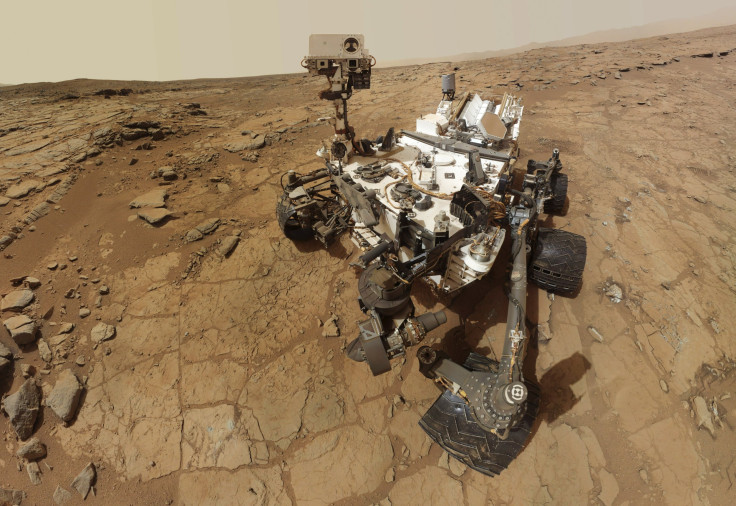Curiosity Rover Reaches Final Destination On Mars

Two years after landing on Mars, the Curiosity rover has reached its final destination -- the base of a 3-mile-high mountain -- where scientists hope tests will reveal whether the red planet once sustained life.
NASA scientists announced the one-ton, $2.5 billion scientific robot on wheels has reached the base of Mount Sharp ahead of schedule. Curiosity is expected to carry out its first drilling after it reaches Pahrump Hills, a gray-green colored rock in two weeks, according to a Russia Today report.
“We have finally arrived at the far frontier that we have sought for so long,” said John Grotzinger, a scientist working on the Curiosity project. “The nature of the terrain at Pahrump Hills and just beyond it is a better place than Murray Buttes to learn about the significance of this contact. The exposures at the contact are better due to greater topographic relief.”
The Curiosity rover has already covered close to 5.6 miles on the surface of Mars. It will now drill into the ground near Mount Sharp, which lies in the center of the Gale crater, in the hope of finding traces of life on the planet.
The rover will cross the mountain via a new route since four of the robot’s six wheels were damaged by the harsh Martian surface last year. “This damage accelerated the rate of wear and tear beyond that for which the rover team had planned. In response, the team altered the rover’s route to a milder terrain,” NASA said in a statement.
“Curiously, because of the wheel damage, it drove us on a pathway further south to be safer to the wheels and once we got to the location ... we recognized that in fact this was an even better place to go across the boundary than it would be to keep traveling toward Murray Buttes,” Reuters quoted Grotzinger as saying. NASA had planned to send the rover over the plains of the Gale crater and the rock formations of Mount Sharp in the Murray Buttes region.
This month, NASA’s planetary-science division reportedly criticized the mission’s aim of collecting eight samples for a total of 13 analyses, saying it was “a poor science return for such a large investment in a flagship mission.”
“I think the principal recommendation of the panel is that we drive less and drill more,” Grotzinger reportedly said. “The recommendations of the review and what we want to do as a science team are going to align because we have now arrived at Mount Sharp.”
Curiosity, a car-size robotic rover, was launched from Cape Canaveral, Fla., Nov. 26, 2011 as part of NASA’s Mars Science Laboratory mission, or MSL. The rover’s goals were to investigate the Martian climate and geology and to assess whether the planet ever offered environmental conditions suitable for microbial life through samples collected inside the Gale crater.
On June 24, Curiosity completed 687 Earth days, or a Martian year, with NASA finding the red planet once had environmental conditions favorable for microbial life.
© Copyright IBTimes 2024. All rights reserved.





















